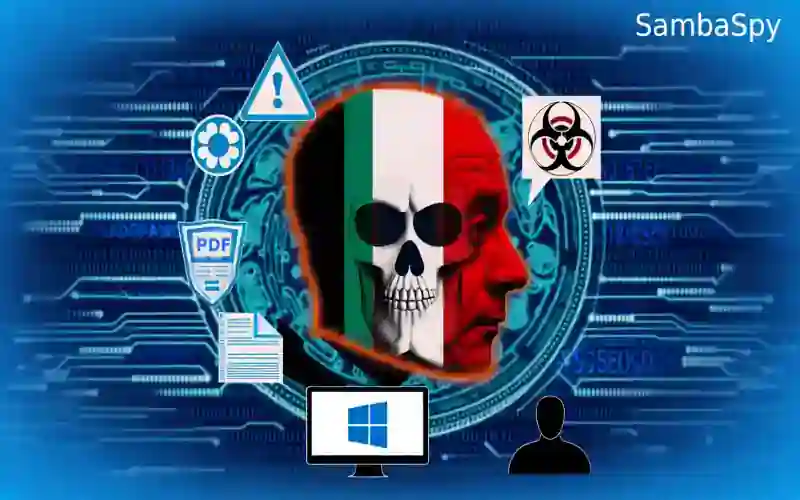
“Unmasking Hidden Dangers: Weaponized PDFs and SambaSpy’s Stealthy Assault on Windows Users”
**Weaponized PDFs and SambaSpy: A Deep Dive into the Latest Cybersecurity Threats**
In the ever-evolving landscape of cybersecurity threats, a new menace has emerged that targets unsuspecting users with a level of precision and deceit that is deeply concerning. The use of weaponized PDF files by threat actors is not a novel strategy, but its implementation has become increasingly sophisticated, making it a formidable tool in the arsenal of cybercriminals. These PDFs, often appearing innocuous, are in fact laden with malicious code, links, and scripts designed to exploit vulnerabilities in PDF readers. This method has become a preferred avenue for attackers as it cleverly evades many traditional security measures.
Recently, researchers at Kaspersky Lab have shed light on a particularly alarming campaign involving a malware known as SambaSpy. This campaign, discovered in May 2024, specifically targets Windows users and has shown a disturbing level of targeting precision, focusing primarily on Italian users. The infection begins with phishing emails that masquerade as communications from a legitimate Italian real estate company. These emails cleverly guide victims through a multi-stage process involving legitimate-looking sites and malicious servers, ultimately leading to the deployment of the SambaSpy malware.
The sophistication of this campaign is evident in its selective approach; only users accessing the malicious link through specific browsers like Edge, Firefox, and Chrome, and who have their systems set to the Italian language, are targeted. This meticulous filtering ensures that the malware affects only the intended victims, thereby reducing the chances of early detection by security systems that might not be tuned to such narrowly defined parameters.
SambaSpy itself is a Java-based Remote Access Trojan (RAT) that is delivered through a JAR file hosted on MediaFire. It is obfuscated using Zelix KlassMaster (a program developed to obfuscate java code) to further evade detection and includes an array of invasive capabilities such as keylogging, clipboard control, webcam access, screen capture, and even remote desktop functionalities. Moreover, it can steal browser credentials from several popular browsers and load additional malicious plugins at runtime using Java’s URLClassLoader.
What makes SambaSpy particularly worrisome is its implementation of anti-VM techniques to bypass virtual machine detections and its dynamic plugin loading capability which allows it to adapt and expand its functionalities after deployment. The attackers behind this campaign have not only utilized complex technical strategies but have also shown a cunning use of linguistic and regional targeting that enhances the effectiveness of their attacks.
The campaign’s focus on Italian users and the use of language checks throughout the infection chain reveal a calculated approach to victim selection. This focus is further complicated by the discovery that some parts of the malware’s code include comments and error messages in Brazilian Portuguese, suggesting a possible Latin American origin for the attackers. This cross-regional activity highlights an unsettling trend where attackers target countries with linguistically similar backgrounds to their own, potentially as a means to better understand and manipulate their victims.
This evolving threat landscape underscores the challenges faced by cybersecurity professionals as they strive to keep up with the rapid pace at which threat actors refine their techniques and expand their targets. The consistent reuse of certain domains by the attackers provides some clues for attribution and may help in enhancing malware detection capabilities. However, the continuous evolution in attack methodologies necessitates constant vigilance and adaptation in cybersecurity strategies.
As we move forward, it is crucial for individuals and organizations alike to remain aware of these threats and to implement robust security measures to protect against them. The case of SambaSpy is a stark reminder of how sophisticated and targeted cyber threats have become, exploiting every possible vulnerability to achieve their malicious ends.














